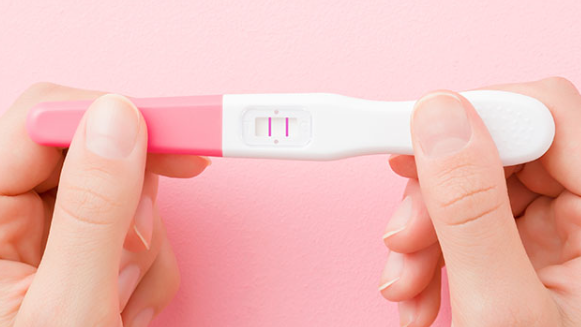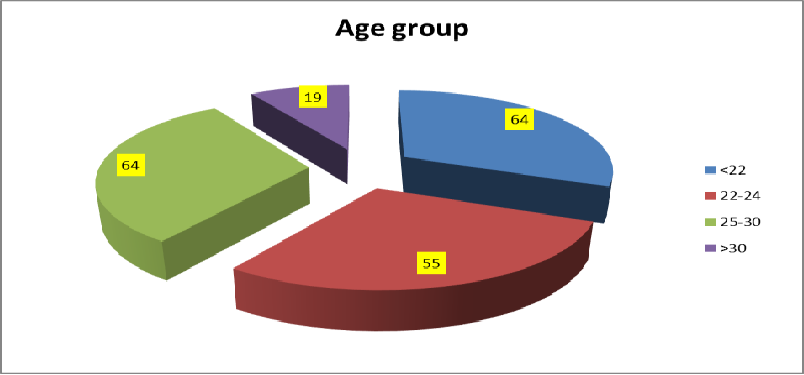Pregnancy is a momentous journey, and the discovery of it often begins with a simple yet profound test. While traditional pregnancy tests are widely available, there’s a growing curiosity around alternative methods. One such method gaining attention is the Pregnancy test at home with sugar. In this comprehensive guide, we’ll delve into the scientific intricacies, the step-by-step process, and the implications of using sugar as a DIY pregnancy test.
1. Introduction

Brief Overview of Home Pregnancy Tests
Home pregnancy tests have revolutionized family planning, providing quick and confidential results in the comfort of one’s home. From the simplicity of pee-on sticks to digital advancements, these tests have become an integral part of the pregnancy journey.
Introduction to Using Sugar for Pregnancy Tests
The unconventional approach of using sugar for a pregnancy test has captured the interest of individuals seeking alternative methods. Let’s explore the scientific basis behind this DIY trend.
2. Understanding the Science
How Pregnancy Tests Work
Detection of hCG Hormone
Traditional pregnancy tests operate on the detection of the human chorionic gonadotropin (hCG) hormone, produced during early pregnancy. This hormone serves as a reliable marker for confirming pregnancy.
Mechanism of Traditional Pregnancy Tests
Elaborate on the mechanism of traditional tests, involving the reaction between hCG and specific chemicals or antibodies on the test strip.
The Role of Sugar in Home Pregnancy Tests
Theoretical Basis
Explain the theoretical foundation of using sugar as an indicator for hCG presence. How does sugar react to the hormonal changes in urine?
Scientific Considerations
Discuss any scientific studies or considerations that support or question the efficacy of sugar as a reliable indicator for pregnancy.
3. Materials Required
List of Materials
Discuss the importance of using plain, white sugar and why alternative sweeteners may not yield accurate results.
Emphasize the need for a fresh and uncontaminated urine sample for accurate testing.
Clean Container
Highlight the significance of cleanliness to prevent external factors from influencing the test.
Stirring Utensil
Explain the purpose of a stirring utensil and the role it plays in the testing process.
4. Step-by-Step Guide
Preparation
Cleanliness and Hygiene
Stress the importance of maintaining a clean environment during the testing process to avoid contamination.
Gathering Materials
Guide users on the systematic collection of all necessary materials before initiating the test.
Mixing Sugar with Urine
Ratios and Measurements
Provide precise ratios of sugar to urine for optimal results. Discuss any variations in ratios and their potential impact.
Proper Techniques
Instruct users on the correct techniques for mixing sugar with urine to ensure uniformity and reliability in the test.
Waiting Period
Understanding the Reaction Time
Explain the expected duration for the reaction to occur and the significance of patience during this waiting period.
Patience in the Process
Highlight the psychological aspect of waiting and managing expectations during the testing period.
5. Interpreting Results
Signs of a Positive Result
Changes in Sugar Reaction
Describe the expected changes in the sugar mixture that indicate a positive pregnancy result.
Color or Texture Alterations
Discuss any variations in color or texture that may accompany a positive result.
Indications of a Negative Result
Lack of Reaction
Explain what a lack of reaction in the sugar mixture might signify and the implications for pregnancy status.
Understanding False Positives and Negatives
Educate users on the possibility of false results and factors that might contribute to inaccuracies.
6. Comparisons with Traditional Tests
Accuracy of Pregnancy test at home with sugar
Scientific Evaluation
Present any scientific evaluations or comparisons between sugar tests and traditional pregnancy tests in terms of accuracy.
Comparative Studies
Discuss any studies that have compared the reliability of sugar tests with commercially available pregnancy tests.
Convenience
Ease of Use
Compare the convenience of using sugar at home with traditional pregnancy tests. Discuss any advantages or disadvantages.
Accessibility of Materials
Address the accessibility of materials required for the sugar test compared to commercially available pregnancy tests.
7. Common Myths and Facts
Dispelling Misconceptions
Reliability of Sugar Tests
Address common misconceptions regarding the reliability of sugar tests and provide evidence-based information.
Misunderstandings about hCG Levels
Clarify any misunderstandings about hCG levels and their correlation with the accuracy of sugar tests.
8. Precautions and Considerations
Potential Risks of Pregnancy test at home with sugar
Contamination Risks
Warn users about potential risks of contamination during the testing process and how to minimize these risks.
Health Implications
Discuss any potential health implications or risks associated with using sugar for pregnancy testing.
Recommended Actions
Consultation with Healthcare Professionals
Encourage users to seek professional advice in case of positive results or uncertainty.
Follow-up Tests for Pregnancy test at home with sugar
Suggest follow-up tests with traditional methods to validate results and ensure accuracy.
9. Historical Perspectives
Evolution of Home Pregnancy Tests
From Ancient Methods to Modern Innovations
Explore the historical evolution of pregnancy testing, from ancient methods to the modern-day advancements.
Cultural and Social Influences
Discuss how cultural and social factors have influenced the perception and development of pregnancy tests.
10. DIY Pregnancy Tests: A Trend or Risk?
The Rise of Alternative Methods
Exploring Different DIY Techniques
Highlight other DIY pregnancy test trends and their prevalence.
Implications for Women’s Health
Discuss the potential impact of DIY pregnancy tests on women’s health and decision-making.
11. User Experiences and Testimonials
Positive Stories
Successful Instances of Sugar Tests
Share positive user experiences where sugar tests accurately detected pregnancy.
User Satisfaction
Discuss the satisfaction levels of users who have opted for the sugar test method.
Negative Experiences
Challenges and Limitations
Explore challenges and limitations faced by users in achieving accurate results with sugar tests.
Unreliable Outcomes
Discuss instances where sugar tests provided unreliable outcomes and the potential reasons behind such discrepancies.
12. Ethical Considerations
Responsibility in Sharing Information
Ethical Guidelines for DIY Tests
Discuss the ethical considerations surrounding the dissemination of information on DIY pregnancy tests.
Advocacy for Professional Guidance
Encourage responsible sharing of information and advocate for seeking professional guidance in matters of pregnancy testing.
13. Addressing Concerns
Public Health Awareness
Educating the Public
Highlight the importance of public health awareness in educating individuals about the pros and cons of DIY pregnancy tests.
Clarifying Doubts and Questions
Address common doubts and questions regarding the use of sugar for pregnancy testing, providing evidence-based responses.
14. Future Implications
Potential Research Areas
Scientific Investigations
Propose potential areas for scientific research regarding the use of sugar in DIY pregnancy tests.
Innovations in Home Testing
Discuss potential innovations in home pregnancy testing and how they might shape the future landscape of DIY methods.
15. Exploring DIY Pregnancy Testing: Unveiling the Controversy
As we continue to unravel the intricacies of using sugar for a home pregnancy test, it’s essential to acknowledge the controversial nature of DIY methods. While some users express satisfaction with the simplicity and accessibility of sugar tests, concerns linger regarding accuracy, reliability, and potential health implications.
Accuracy Revisited: Navigating the Ambiguities
Addressing Scientific Evaluations
Despite the anecdotal evidence supporting the efficacy of sugar tests, scientific evaluations remain scarce. Acknowledge the need for more rigorous studies to establish the accuracy of this DIY method conclusively.
Comparative Insights
Delve deeper into comparative studies, shedding light on the contrasting outcomes between sugar tests and traditional pregnancy tests. Are there specific scenarios where sugar tests excel, or do limitations persist?
Convenience vs. Confusion: A Balancing Act
Ease of Use
While the simplicity of sugar tests is undeniable, juxtapose this with potential confusion arising from the subjective interpretation of results. Compare user experiences, highlighting instances of clarity and ambiguity.
Accessibility Challenges
Explore the accessibility of materials required for sugar tests, considering regional variations and potential disparities in resource availability. Does the convenience of sugar tests extend to diverse demographics?
Myth-Busting: Separating Fact from Fiction
Addressing Reliability Concerns
Challenge prevailing myths surrounding the reliability of sugar tests by presenting evidence-based information. Discuss scenarios where sugar tests may yield accurate results and instances where caution is warranted.
hCG Levels and Misunderstandings
Clarify misconceptions related to hCG levels and how these may influence the reliability of sugar tests. Unravel the complex interplay between hormonal fluctuations and DIY testing outcomes.
Navigating Risks: A Call for Caution
Contamination Risks
Elaborate on potential contamination risks during the sugar testing process, emphasizing the importance of a controlled environment. Provide practical tips for users to minimize these risks.
Health Implications Unveiled
Delve into potential health implications associated with relying on sugar tests. Are there documented cases of adverse effects, and how do these compare to traditional methods?
Seeking Professional Guidance: A Crucial Step
Encouraging Consultation
Reiterate the importance of consulting healthcare professionals in the aftermath of a positive result. Emphasize the significance of expert guidance in making informed decisions.
Follow-up Tests: A Prudent Approach
Advocate for follow-up tests using established methods to validate and corroborate DIY results. Emphasize the complementary role of traditional tests in ensuring accuracy.
A Historical Lens: Tracing DIY Trends
Historical Evolution of Alternative Methods
Explore the historical context of DIY pregnancy testing, from ancient practices to the present. Uncover cultural and societal influences that have shaped these alternative approaches.
Modern-Day DIY Landscape
Examine the contemporary landscape of DIY pregnancy testing, encompassing various methods and their prevalence. Discuss the impact of social media and online communities in popularizing these trends.
User Narratives: The Tapestry of Experiences
Success Stories Amplified
Share compelling success stories from users who have embraced sugar tests with positive outcomes. Highlight the emotional aspect of these experiences.
Navigating Challenges: Lessons Learned
Acknowledge and explore the challenges faced by individuals using sugar tests, offering insights into lessons learned and potential pitfalls.
Ethical Discourse: Balancing Information Dissemination
Ethical Guidelines for Advocacy
Revisit ethical considerations surrounding the promotion of DIY pregnancy tests. Provide a framework for responsible information sharing, emphasizing transparency and honesty.
The Role of Professionals
Highlight the pivotal role healthcare professionals play in guiding individuals through pregnancy testing decisions. Encourage collaboration between DIY methods and medical expertise.
Public Awareness and Education
Advocacy for Informed Choices
Promote public awareness campaigns emphasizing the importance of informed decision-making. Provide resources and information to empower individuals in navigating DIY options responsibly.
Community Support
Explore the role of community support and education in fostering a culture of responsible DIY testing. Discuss initiatives that encourage open dialogues about the benefits and limitations of these methods.
Future Horizons: Bridging Gaps in Knowledge
A Call for Further Research
Advocate for increased research efforts to bridge existing gaps in knowledge surrounding DIY pregnancy testing. Identify potential areas for exploration and avenues for scientific inquiry.
Technological Innovations
Discuss emerging technologies that might shape the future of home pregnancy testing. Explore how advancements in science and digital tools could enhance the accuracy and accessibility of DIY methods.
16. Concluding Remarks: Toward Informed Choices
As we conclude this exploration of pregnancy testing at home with sugar, it’s clear that DIY methods represent both an intriguing trend and a source of contention. While some users find success and satisfaction, the lack of scientific consensus and potential risks underscore the need for caution. As individuals navigate the realm of DIY testing, let us collectively champion informed choices, prioritize health, and advocate for a harmonious collaboration between DIY trends and established medical guidance. The journey of pregnancy is a profound one, deserving of careful consideration and compassionate support.
17. The Intersection of Science and Empowerment: A Balancing Act
In the evolving landscape of pregnancy testing, the intersection of scientific inquiry and individual empowerment takes center stage. As we delve deeper into the DIY phenomenon of using sugar for pregnancy tests, it becomes apparent that the journey is multifaceted, shaped by personal narratives, societal influences, and the pursuit of autonomy in healthcare decisions.
A Symphony of Perspectives: Weighing Testimonials
Diverse Experiences
Acknowledge the diversity of experiences shared by individuals who have ventured into sugar-based pregnancy testing. From elation to uncertainty, each story contributes to the rich tapestry of perspectives.
Emotional Resonance
Explore the emotional resonance embedded in these narratives, emphasizing the profound impact that DIY testing can have on individuals and couples navigating the complexities of fertility and conception.
Beyond the Binary: Navigating Gray Areas
Acknowledging Ambiguity
Recognize the inherent ambiguity in DIY pregnancy testing, where results may fall into gray areas. Discuss the emotional and psychological implications of navigating uncertainty in this intimate realm.
Redefining Success
Challenge conventional notions of success and failure in pregnancy testing. Is success solely determined by the accuracy of the test, or does the emotional journey play a more significant role?
Ethical Compass: Guiding DIY Advocacy
Ethical Dilemmas Explored
Delve into the ethical dilemmas surrounding the advocacy of DIY pregnancy testing methods. Discuss the responsibilities of individuals sharing information within online communities and social platforms.
Encouraging Open Dialogues
Promote open dialogues about the ethical considerations tied to DIY testing, fostering an environment where individuals can openly discuss their choices and experiences without judgment.
The Digital Age: Influence and Connectivity
Social Media Impact
Examine the influence of social media on the propagation of DIY pregnancy testing trends. Discuss the role of online communities in shaping perceptions and disseminating information.
The Influence of Connectivity
Explore how increased connectivity has democratized information but also underscore the need for responsible information sharing. Discuss strategies for maintaining a balance between empowerment and caution.
Public Health Implications: Navigating Challenges
Public Health Perspectives
Consider the broader public health implications of the DIY testing trend. Discuss challenges related to misinformation, potential health risks, and the role of regulatory bodies in addressing these concerns.
Collaborative Solutions
Propose collaborative solutions involving healthcare professionals, researchers, and individuals to bridge gaps in information, ensuring a more comprehensive understanding of the implications of DIY testing.
Cultural Influences: Shaping Perspectives
Cultural Attitudes Toward DIY Testing
Explore how cultural attitudes and beliefs influence the acceptance and rejection of DIY pregnancy testing methods. Discuss the role of cultural norms in shaping individual choices.
Cultural Sensitivity
Advocate for cultural sensitivity in discussions surrounding DIY testing, recognizing that diverse perspectives and practices contribute to the complexity of the conversation.
A Call for Inclusivity: Amplifying Marginalized Voices
Addressing Disparities
Highlight potential disparities in access to information and resources related to DIY testing. Discuss initiatives aimed at amplifying marginalized voices and ensuring inclusivity in the conversation.
Empowering Vulnerable Communities
Explore avenues for empowering vulnerable communities with accurate information and resources, acknowledging the intersectionality of factors that may influence their choices.
Holistic Perspectives: Integrating Traditional and Modern Approaches
Embracing Holistic Healthcare
Advocate for a holistic approach to reproductive health that integrates both traditional medical guidance and DIY methods. Discuss how a balanced perspective can empower individuals to make informed choices.
Bridging the Gap
Highlight the potential for collaboration between healthcare professionals and individuals engaged in DIY testing. Explore ways to bridge the gap between medical expertise and the autonomy sought by those opting for unconventional methods.
Moving Forward: A Compassionate Approach
Compassion in Discussions
Emphasize the importance of compassion and empathy in discussions surrounding DIY pregnancy testing. Recognize that individuals may be navigating complex emotions and decisions.
A Shared Responsibility for Pregnancy Test at Home with Sugar
Conclude by reinforcing the idea that the conversation around DIY pregnancy testing is a shared responsibility. From individuals to healthcare providers and researchers, each plays a role in fostering an environment of understanding, support, and informed choices.
18. Epilogue: Navigating the Uncharted
As we reflect on the intricacies of using sugar for pregnancy testing, it becomes clear that the journey is an ever-evolving exploration, marked by individual stories, scientific inquiries, and societal shifts. Navigating the uncharted waters of DIY testing requires a delicate balance between autonomy and informed decision-making.
In the years to come, as technology advances and societal perspectives continue to evolve, the landscape of pregnancy testing will undoubtedly witness further transformations. As we embark on this journey, let us carry with us the lessons learned from the experiences of those who have explored DIY methods, and let us tread with empathy, understanding, and a commitment to the well-being of individuals and communities alike Pregnancy test at home with sugar.
Conclusion
Recap of Key Points
Summarize the key points discussed in the guide, emphasizing the scientific, practical, and ethical aspects of using sugar for pregnancy testing.
Encouraging Informed Choices
Conclude by encouraging individuals to make informed choices, weighing the benefits and risks of alternative methods while prioritizing their health and well-being.





